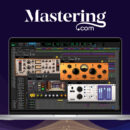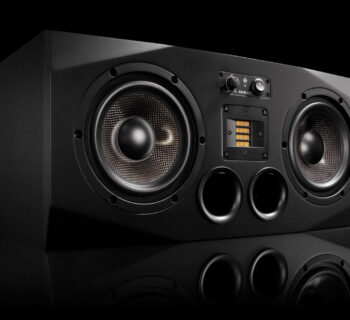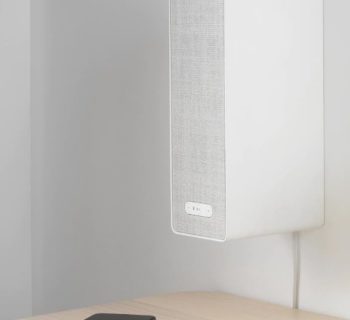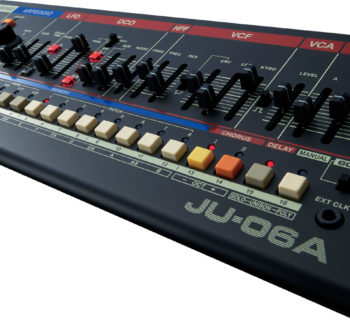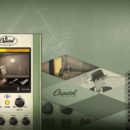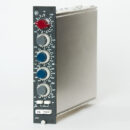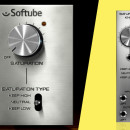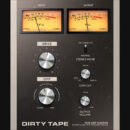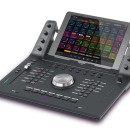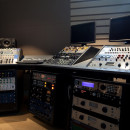ARC Studio is the new hardware independent sound correction processor that frees the computer and DAW from the task, using ARC 4, an evolution of the very popular ARC 3. A smart solution to have monitors calibrated independently of the source.
IK Multimedia has long won over many users with its ARC solution, i.e., the sound correction system for accurate listening from studio monitors, to be plugged into the stereo bus of the DAW. The last version had improved a lot. Now version 4 changes everything: the new algorithms are used by the ARC 4 DAW plug-in, which is joined by ARC Studio, also based on ARC 4, but in a standalone version on an external hardware processor to be inserted before the inputs for the monitors and after the audio interface, independent, after programming, of the computer connection. This means, in production, that you will no longer use the plug-in on the stereo bus of the DAW and will not need to disable the plug-in at bounce time. In addition, ARC Studio eliminates the problem of listening from different sources on the computer or console, because the correction is external and independent. On Windows, ARC Studio is especially useful: when switching from a DAW to listening on Spotify, for example, there is no need to change audio drivers. An added benefit is the ability to continue using your own interface with internal mixer with zero latency, because ARC 4 is not on the stereo bus of the DAW and, consequently, does not change latency.
The ARC Studio bundle comes with everything needed to accomplish the task of analysis: the classic omnidirectional MEMS microphone, with microphone stand, that we know from IK Multimedia's monitors equipped with environmental correction, USB C cable, hardware unit with integrated DSP and external power supply of the same. The bundle, in addition to the external unit and MEMS microphone, includes the two standalone applications ARC System 4, for correction, and ARC System Analisys 4 for analysis.
The system is dedicated to project studios or studios working in stereo, even with separate subs. Nothing prohibits using it for small home studios as well, as long as the audio monitors have XLR inputs. Otherwise a few extra cables will be needed to convert the XLR outputs of the external unit to TRS or RCA jacks.
ARC Studio is aimed at the world of producing musicians, production, mixing and mastering studios who want more control over the monitor's frequency and stereo response in the working environment. As has happened with some recent plug-ins, ARC Studio also allows listening through virtualization of the responses of other monitors, including a smartphone or TV, so you can have different listenings to instantly recall for mix evaluation.
ARC Studio, hardware
The hardware unit is built with great attention to detail and materials: the chassis is in metal, and the rear connections (pair of XLR balanced inputs and outputs) are made with Neutrik connectors. Inside, the PCB employs an excellent AKM AK4493 SEQ converter, a 32-bit D/A from the VelvetSound series with 125 dB signal-to-noise ratio, which brings ARC Studio's dynamics to an impressive 120 dB. The A/D converter is an AKM AK5572 also 32-bit with direct DSP support. IK Multimedia has chosen a MIMXRT1061 DVL6B which is an NXP implementation of a 600 MHz ARM Cortex M7 Core with an integrated microcontroller. The op-amps for inputs and outputs are the classic 5532. The front button, which enables or disables correction on the DSP, drives an internal relay that prevents any noise during use.
The only two LEDs are the power and signal presence LEDs. Latency is virtually zero and does not affect playback. The USB C port is for transferring analysis data and real-time control of the DSP with the standalone application. ARC Studio is to be inserted between the monitor controller, or the two main outputs of the interface, and the monitors. If you do not intend to disable correction with the dedicated button or use other correction curves, the hardware can hide itself from prying eyes.
In terms of specifications, the external unit works with 96 kHz 24-bit conversion, internal resolution of 32 bits, frequency response from 2 Hz to 45 kHz, dynamic range of 120 dB (A-Weighted), crosstalk between channels of -122 dB, and maximum output level of +17 dBu. Impedance is 20 kOhm at the input and 50 Ohm at the output.
ARC System 4 Analisys, the measurements
The analysis process is entrusted to the standalone ARC 4 System Analysis application. The analysis must be performed with an omnidirectional measurement microphone, including the three versions of microphones from IK Multimedia, and also accepts third-party microphones whose dB correction table (ECF on .txt file) is known. The audio interface must support ASIO drivers. In systems with subwoofers, the latter must remain active along with the bass managemet, because the analysis system will still see the whole as one stereo system. Analysis will always take place at the 48 kHz sampling rate.
The steps are all very simple, following the graphical instructions and setting the required parameters. A test signal can be played in Mic Setup to find the correct input level, at which point the software allows you to move on to the next step. The analysis can be performed on only seven points on a single height or on 21 points on three different heights. The choice of position and points depends on the selection of type of environment being measured, between project studio, Studio Monitor-Spot, Studio-Wide Area, Studio-Back Area (the classic couch the client sits on), Movie Studio/Home Theater, considering that the smaller the size of the environment the more accurate the measurement.
Nothing prohibits you from changing the microphone positions, adapting them to the way you work and move around the studio, as long as they are always symmetrical between the left and right sides. The aspect is not insignificant, because different response curves can be created, for example, when working behind the outboard desk rather than in front of the mixer. The analysis also takes into account a possible inverted phase in one of the monitors, reporting the error. As soon as the measurements are completed, the software calculates the correction needed for the monitors and prompts you to save the file by also associating the image of one monitor. Important note: There is no backward compatibility with measurements taken on previous versions of ARC, due to the different algorithms. All measurements taken on ARC 3 will have to be repeated.
ARC System 4, the correction
Once the correction curves have been saved, which due to the size of the file also seems to involve analysis of the impulse response, it is necessary to open the standalone ARC 4 application, or its plug-in in the DAW.
The main ARC 4 window allows you to view the response of the monitors, in green, and that of the monitors themselves once the correction has taken place.
The white or black line (depending on how the colors are displayed), with the six EQ points, corresponds to the very purpose of the correction, which can be chosen from the Target menu, from which to choose for Default (with slight boost on the low frequencies for more natural listening in small rooms), Flat, Standard Control Room with a slight boost on the mid-bass when the monitors are on the console, Lively Room 1 and Lively Room 2 to emulate rooms with natural reverberation with damping on the high frequencies, Control Room Countour with a slight decrease in the high frequencies, Dolby Atmos Target to replicate the Dolby curve, Warm Tilt and Bright Tilt. The EQ curves are superimposed on those created by correction. The metering reports only the Peak measurement and the trim has a value of -15/+15 dB, not taking into account the differences between the correction curves, the target and Virtual Monitoring. Level monitoring is different in the plug-in, as we shall see. In play, it is possible to recall the saved measurements, target and response curves of more than 20 different famous monitors to hear the difference in real time.
In Edit, the curve can be edited with six filters, each with +/-6 dB: by first selecting one of the eight Custom memories, you can edit the curve and then save it in the corresponding Custom slot. In contrast, it is not possible to edit and save in Custom an EQ from presets.
In the case of rooms where the monitors encounter asymmetrical walls, there is a Combined L/R function that creates an average of the left and right responses so as not to exaggerate the phase differences of the original correction. Still on the subject of phase, you can choose between Natural Phase, to maintain the best phase coherence, or Linear Phase, which keeps the phase response between the two monitors unchanged but inserts 50 milliseconds of latency. It is possible to exclude correction below or above 200 Hz by specifying at will the area to be excluded thanks to two points that can be programmed graphically or with the Low and High Range controls. The resolution of the correction filters is left to the Correction Type parameter, which can change the listening quality and is worth trying.
Any changes made can be saved to ARC Studio with the Store button, which will keep them even when the power is turned off. You can recall the saved curve on ARC Studio with Reload. Once the correction parameters have been saved, the external unit can also work detached from the computer.
The ARC 4 plug-in
There are some important differences between the standalone version and the DAW plug-in for VST and AAX. The latter includes a real-time spectrum analyzer. The metering is comprehensive, compared to the standalone version: since the correction can affect the master bus level, IK Multimedia has taken over the metering from T-RackS 5, which provides a choice of Peak, RMS, Loudness (LUFS) with Dynamic Range (DR) both pre- and post-processing, with associated Trim adjustment from -30 to 0 dB and Correction button. The functionality of the Trim is remarkable: every time you choose among the different correction curves or impose a monitor virtualization, ARC 4 immediately recalculates the differences between the peaks, RMS, and loudness imparted by the correction and indicates, in red on the Trim, the range not to be exceeded, so that the listening is immediately balanced between original and correct. It works great and is very fast! The Trim's range is activated by the choice of measurement, target, and virtual monitoring. The plug-in never interacts with the external ARC Studio unit and it makes sense: the plug-in is inserted on the stereo bus of the DAW so it acts before A/D conversion on its own audio interface. Only the standalone version allows the link to the external unit.
The plug-in latency is only 64 samples in Natural Phase and rises to 2100 samples in Linear.
Under test
Having long been familiar with previous versions of ARC, which are almost miraculous for small listening environments with any kind of low to medium quality monitors to keep resonances and phase differences at bay, we expect a lot from the new ARC Studio. The considerations apply as much to the standalone version as to the plug-in.
Analysis of monitor response is simple and very well guided. Impossible to get wrong. We wouldn't have minded having a single hardware for analysis and correction. ARC Studio is an external unit with the sole task of processing the incoming analog signal from the interface and sending it back to the monitors. The conversion quality is very good, and we would have liked to use it as an audio interface as well. We also would have preferred Combo connections, to make connections easier, but that's fine too. We make no secret of the fact that we would have loved to have had a digital input and output, even S/PDIF, to bypass its admittedly excellent conversion. As it is, it is perfect for project studios and studios based on stereo listening, while in mastering some will not be entirely convinced by the idea of inserting another conversion stage between monitor controller and monitor.
The correction is very effective and natural: we tried ARC Studio with the small IK Multimedia iLoud Micro Monitors, in a very bad room, typically desktop computer. The small monitors were hooked to the desk with two screens and a rather long top. ARC Studio literally turned the results around, leading to the kind of listening we know to be professional, very natural and never muddled in the mids, as happens when a monitor meets the desk or console top.
We then went to the studio and put in ARC Studio before the ATC 50 ASL Pro with subwoofer. The results were again excellent, but much less noticeable. Also, the coupling between ATC and acoustically treated room is very well known to our ears, so the timbre with ARC Studio was different, which is not to say worse. It is not news that acoustic correction systems give the best results in non-acoustically controlled environments, but again a difference was there between corrected and uncorrected system.
While we were at it, we tried it on the little old Genelec 8020s: again, the results were striking, planing out some of the excesses and enhancing some of the parts of the timbre that were made worse by the 8020s being too close to the monitors and walls.
We appreciated some not-so-common features: the trim range in the plug-in, for a balance with the unprocessed stereo bus, allows for proper comparisons. The choice of target is interesting, because it actually mimics some characteristics of environments that make monitors sound different. Every producer or sound engineer has his or her own preferences for acoustics, and Target allows you to quickly adapt the correction to your most typical way of listening. CPU consumption is minimal in the plug-in. We found a bit inconsistent the ability to save curve changes with the six filters, if a Custom slot is not selected first. Good instead that there is no need to always save to ARC Studio when changing curves or intervening: changes always operate in real time. It is not possible to intervene on the correction curve, except with the six filters that have a range reduced to +/-6 dB. There may be occasions a where the range of the gain filters is insufficient.
Some parameters proved essential in finding the best possible response to the correction. We refer to the choice between Natural and Linear Phase, the type of correction between Sharp, Default and Broad. Linear was the best choice in the studio, while Natural was preferred in desktop settings. Sharp was almost always more accurate on averages. The feature we will never do without is the Low and High range for correction intervention, already present on ARC 3. Especially on the high frequencies, sometimes the correction software starts to overdo it above 5 kHz, resulting in a somewhat artificial timbre and signs of comb filtering. ARC 4 and ARC Studio gave natural and pleasant results, but still we still prefer to hear the tweeters as they are on the higher end of the spectrum, perhaps more out of habit or perhaps because we work in a little live room. So we took advantage of the ARC option, excluding the part above 10 kHz from correction. And we really liked the timbre, as well as the translation quality compared to other monitors.
Critical listening is as it should be, once the correction is turned on: Toto's I Will Remember on Micro Monitor was incredible, given the minimal size of the monitors. The three-dimensionality of Halie Loren's L-O-V-E expanded on Genelec 8020. The reverberations and ambience of a crowded mix such as Snacktime's I Don't Give a Damn emerged from the mists of muddled averages due to the desk on which the monitors were placed. In any situation, ARC Studio showed how much better reproduction quality can be achieved with accurate acoustic correction. The new algorithms are a step up from ARC 3, especially with better stereo field definition and less artificial high frequencies. We have always preferred to work with Sharp and an intervening limit around 10 kHz, but these are personal choices, not to want to change the colors we are used to.
Conclusions
The IK Multimedia ARC 4 Studio is an ideal solution for anyone with a listening system of any size in a room with little or no acoustic treatment. It turns desktop monitors into reliable, professional listening systems with a quality rating that is almost unbelievable. The external unit solves listening problems on different applications and sources in one fell swoop. You can forget about it activated and hide it from the eyes of those trying to figure out why your monitors sound so good, or keep it within reach of a USB cable to change listening conditions in real time, for example, to listen to how a song sounds on your smartphone or on different monitors.
Our advice is simple: before you change yet another pair of monitors because you are not satisfied, plug in ARC Studio and only then decide if you really need to replace them. You will become aware that it is the pairing of room and monitors that determines the quality of listening, and not the monitors alone. Finally, one of the absolute advantages of ARC Studio is its great effectiveness even for older monitors, which often lie somewhere in the studio, with amazing results.
A complete system for the listening facelift!
Pro
- Remarkable results on any monitor, even an older one
- Ease of use
- External unit conversion quality
- Trim range for plug-ins very useful
Cons
- I/O only on XLR
- Custom memory management













